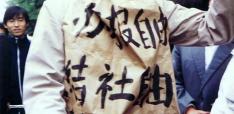Iran’s Foreign Policy after the Election of Hassan Rouhani
Anoush Ehteshami examines the recent domestic changes that will shape Iran’s relations with the outside world in 2014.
What I will try and do is provide a grid, a broader canvass if you will, on which Iran’s foreign policy may be taking shape under President Rouhani, and I will do so in two ways: first, to look at the political and economic situation in Iran, followed by a survey of the regional environment. My assumption is that the regime is changing course and tempo under the new administration and it will try and overcome Iran’s many domestic problems through an improvement in its international relations My assumption is that Iran’s relations with the rest of the world will change, indeed improve, and at times and in places rather dramatically.
Rouhani’s election victory
Elections matter in Iran and the outcome of the June 2013 elections is proving to be far-reaching. The election process, for all its limitations and conditionalities, is not as ideologically driven as previously assumed. Rather, it is increasingly based on impressions, atmospherics and personalities. Though himself an establishment figure, Rouhani nevertheless came to represent an alternative to the order created by the previous Leader-endorsed administration.
Further, the victory of Rouhani arguably represents the defeat of the most peripheral groups in the Iranian political spectrum. In a day, Ahmadinejad and his supporters lost all of their clout and popular appeal. The support they had amassed during the previous eight years melted away, with no-one in the end making a fuss about the rejection of Ahmadinejad’s preferred candidate for the presidency. This is a significant development – the neoconservative order has been shattered.
Rouhani’s election success also heralds the emergence of a new coalition of forces from the ranks of Iran’s factionalised political system. A coalition that is more than reformist and less than conservative – a centrist alliance reminiscent of Rafsanjani’s administration (1989-97) and indeed sharing many of that administration’s values and priorities. Furthermore, Rouhani’s government has legitimacy and the force of the ballot box behind it. And legitimacy gives the president authority and room for manoeuvre. As FM Zarif put it recently: “In our recent presidential election, which was a proud manifestation of the ability of an Islamic model of democracy to bring about change through the ballot box, my government received a strong popular mandate to engage in constructive interaction with the world, and particularly with our neighbors. We are dedicated to making use of this mandate to instigate change for the better…” (Sharq al-Awsat, 21/11/2013).
But the unpicking of the securitised, proto-Stalinist, state will prove difficult and challenging.
Socio-economic context cannot be overplayed
Iran’s oil exports are down: in 2012 they have averaged no more than 1.5 million barrels per day (mbpd), well below the 2.5 mbpd that Iran had intended to produce in its annual calculations. Sales also declined by as much as 40 percent and exports are not expected to rise. Projections for oil exports show a catastrophic drop in exports: Oil exports were 4.0 mbpd in 2010 and 2.2 mbpd in 2011. While continuing high oil prices provide some compensation for the loss of exports (income was estimated to be around $118 billion in 2012), nevertheless the downward trend in output will damage Iran’s market share and its status as OPEC’s second most important member.
The loss of SWIFT, the international system for transferring funds, has made cross-border transactions nearly impossible. It has encouraged barter and therefore a much less cost-effective and efficient method of completing its international transactions. In addition, consumers are unhappy about the massive influx of cheap imports, including manufactured goods and foodstuffs, from India and China, and complaints have become commonplace.
Sanctions have crushed the already weak national currency; its value against the dollar having more than halved by the end of 2012. The currency’s collapse has made hard times harder: the dollar went from 870 tomans in 2005 to 3,200 tomans in 2013, which means that a 1 million toman monthly salary’s value has dropped from $1,114 in 2005 to just $313 in 2013. The Iranian population’s purchasing power has dropped by 72 percent between 2005 and 2013.
With unemployment hovering at around 28 percent, social misery is mounting, with young people under 25 accounting for around 70 percent of the recorded unemployed. Hyperinflation is now a real danger as prices rise by over 40-50 percent on average. By way of a comparison, neighbouring oil states worry about annual inflation rates of 2.5 percent, or at worst 3.5 percent. GDP is estimated to have contracted by just over 5 percent in 2012 and 2013, just as Iran had begun enjoying historically unprecedented levels of oil income.
Regional context
Clearly, the Islamic Republic is increasingly exposed to the seismic shifts taking place at the regional level, which it is less able to manage or control. Iran’s national economic situation has worsened just as it became more vulnerable externally. Iran is vulnerable sub-regionally in the Persian Gulf: the situations in Bahrain, Iraq and Yemen pose their own unique challenges, as do tense relations with the UAE and Saudi Arabia.
Despite expectations, Iran has not made gains in the Arab Spring, regardless of seeing the Arab revolts as a zero-sum game between the US and itself. The ‘Islamic awakening’ has not brought it new allies and has not brought it a better geopolitical vantage point either. Then there is Syria! The crisis there challenges Iran’s ideology, legitimacy, alliance structure, and of course perception of strategic depth in the Levant. Iran’s role in Syria has increased tensions between Tehran and Riyadh, Tehran and Ankara, and Tehran and Cairo. Danger of spill over of the Syria conflict has grown dramatically and Iran could potentially be sucked into sub-theatres and domestic affairs of other states. Sectarianism’s sharp edge has become Sunni-Shia relations and Iran is extremely vulnerable to accusations of leading a ‘Shia bloc’ to the detriment of the Sunni-majority Arab world.
President Rouhani’s foreign policy
What drives President Rouhani’s worldview and what constitutes his foreign policy agenda? What does his election victory tell us about Iran and where it might be heading? The first point to note is that he has been at the heart of the Iranian power elite since 1980. He has been Secretary and Representative of the Supreme Defence Council (1983-88), Commander of the Iranian air defences (1985-91), Deputy Commander of Iran’s armed forces (1988-89), National Security Adviser to the President (1989-97) and Secretary of the Supreme National Security Council (1989-2005). This is in addition to his role as an MP, member of key parliamentary committees as well as Deputy Speaker of Majlis. Nonetheless, I would sum him up as an “establishment rebel”, if that is not a contradiction in terms. He is a product of this system and has been with it all his life. But at the same time he is open-minded on relations with the outside world and also an advocate of ‘controlled’ social freedoms.
Secondly, some fundamentals about the Islamic Republic: It is a unique polity. It is a republic, with a written constitution and all the standard trappings of a republic – executive, legislative and judiciary branches are clearly separated and their roles constitutionally defined. Elections for public office take place regularly and without fail. And yet, candidacy for office is tightly controlled, the Leader has vast constitutionally-given powers, and factions riddle the body politic of the unique Iranian system, the so-called Nezam. There is thus a multiplicity of centres of decision-making and, ultimately, power.
But, there exists real and seemingly irreconcilable tensions at the heart of the Nezam, the most glaring and profound of which are: between ideology and pragmatism, between revolutionism and conformism, between globalism and isolationism, between pluralism and authoritarianism, and between exceptionalism and universalism. These tensions haunt Iranian politics and will necessarily also affect, constrain, Rouhani. The point to note is that foreign policy is not just made at home but is made for home. It is, therefore, informed by the domestic balance of forces as much as by the conditions of the polity and – increasingly, of the economy.
The current aim is for détente, primarily with the West/United States. To try and find a modus operandi with the United States, or at worst a mutually acceptable ‘managed’ system of competition between Tehran and DC. But, there are those who think that dialogue, indeed peace, with the United States is the prize and a real game changer for Iran, when it comes to redefining its role in the wider region.
Drivers of Rouhani’s foreign policy
Iran will likely continue to prioritise the nuclear negotiations as the best way of breaking the logjam with the international community, and for bringing some relief to the beleaguered economy. In a word, the plan is to try and improve the economy and the country’s socio-economic condition through a bold move on the nuclear file. It will try and secure early success in order to silence the opponents at home and build popularity for taking other bold steps.
But, in other foreign policy areas, Iran cannot see Assad fall and his regime fail. With its ally, Iraq, they cannot fathom an Islamist regime in power in Damascus (which will be Sunni and close to Saudi Arabia, Turkey, or whomever). Iraq, then, looks to Iran to help defend what we might call ‘the integrity of a secular Syria’. Yet, without satisfactorily addressing the Syrian crisis Iran cannot expect to make headway in its more difficult regional relationships. Also, having shown ‘heroic flexibility’, as Ayatollah Khamenei put it, in the nuclear negotiations, world powers may press it to do the same over Syria. Will it? Unlikely.
So, what will the Rouhani administration do now? I propose that these will be his priorities:
- Rebuild ties with Turkey which were badly shaken after 2009.
- Try and rebuild bridges with Saudi Arabia and other Arab neighbours, particularly in the GCC.
- Distance itself from the burning fires of the transition Arab countries, where possible.
- If it can, keep its nose out of the Arab-Palestinian theatre.
- Recover ground lost in relations with the EU.
- Mend fences with the UK.
- Not rush to deepen Ahmadinejad’s links with the populist Latin American states.
Will his administration be successful in these realms? Well, the answer to that lies – as in the past! –at home: In the balance of forces at home and the way in which President Rouhani manages to reduce the many institutional, ideological and structural tensions which have come to characterise modern Iran. In this he will need the Leader as an ally and Ayatollah Rafsanjani as an advocate.
Based at Durham University, Professor Anoush Ehteshami is the Nasser al-Mohammad al-Sabah Chair in International Relations and Director of the HH Sheikh Nasser al-Mohammad al-Sabah Programme in International Relations, Regional Politics and Security. This post is derived from a talk given the London School of Economics and political Science, 27 November 2013.


